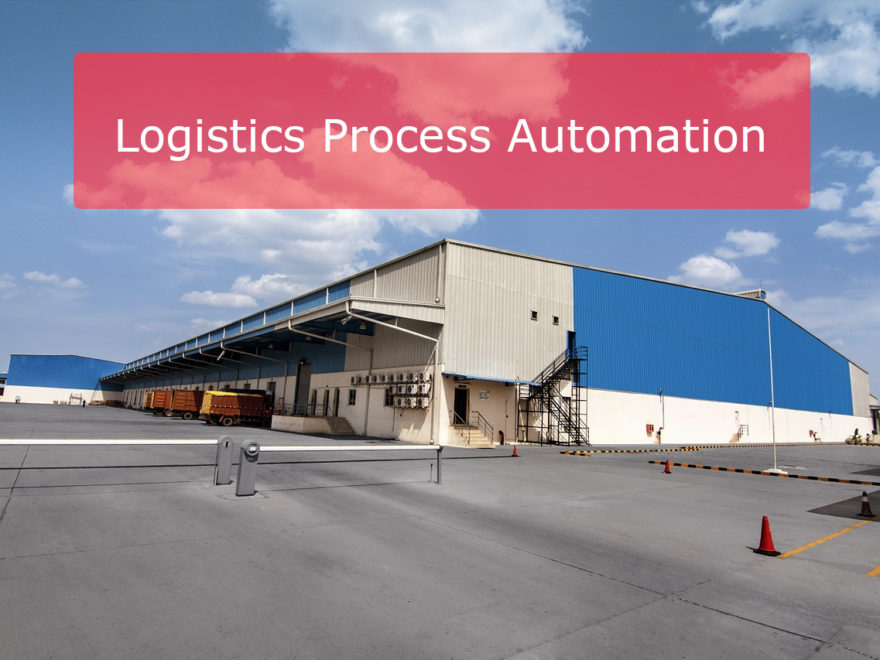In-Plant Logistics is the logistics services suite that is required for every organization to carry out the movement of raw material / Work-in-Process / Final Goods within the plant for their day-to-day operations.
With the advancement of technology, every organization strives to make their logistics process automatize to ease their business workflow and to make it cost-efficient. Automation is the process of using various technologies to run the business efficiently with less human involvement.
Challenges of Traditional Logistics Practices
- Cumbersome Entry Gate Documentation: Manual paper-based Entry-Gate documentation of any vehicle is one of the major concern for an organization. This stage includes two steps:
- Vehicle Documentation: It includes manual checking of the various documents of the vehicle i.e., Registration Certificate, PUC Certificate, Insurance Documents, etc.
- Health Check: It includes the manual checking of the various parts of the fleet like whether the windscreen is intact, and if the horn, headlight, taillight, and indicators are properly working or not.
This process eventually increases the turn-around time and thus, adds to the non-productivity of the organization. To compensate the Supervisors doing this job slacks off during peak season resulting in accidents and mishaps.
- Less Visibility: Real-time visibility into end-to-end Logistics movement within a plant is a major concern for every industry. In the case of trip management, there is no proper information of the fleet within the plant i.e., RTA, ETD, etc., No live location, what product does it carry, etc.
- Unorganized Parking: Unorganized parking is another important challenge, which adds on the indirect cost for the company. There is no proper sequence of the parking of the vehicle in the plant, which in-turns increase the loading/unloading time. Loading and Unloading of the fleet is not predetermined.
- Unorganized Loading Sequence: Sometimes due to an unorganized loading sequence, the consignment of one fleet gets carried by another and thus, make it difficult for the plant supervisor to check what consignment the particular fleet is carrying out.
- Invoicing Delays: Traditional Paper based mode of invoicing takes at-least 3-4 hours for the fleet to get their invoices done and thus, adds in the holding cost of an organization. Moreover, data-punch outs are a major concern, which adds to the invoicing delays.
- Turn-Around-Time (TAT): Holding cost is one of the indirect cost that contributes much to the non-productivity of the organization. The total turn-around time of a vehicle entering in a plant is at least 15-16 hours, which is very high and thus, leads to the idling and inadequate usage of resources.
Automated Ways to Eliminate Traditional Logistics Challenges
Automated Security Checks: To eliminate the traditional paper-based entry-gate security check system, a dedicated mobile app can be used by security personnel with a checklist to automate daily necessary checks for vehicle’s health, such as headlight, Tyre status, windshield, horn, tail lights, indicators, etc.
- Managing digital documents such as Registration Certificates, PuC, and Insurance through the app.
- If there is a lapse or deadline invalidity, a proper prior intimation can be generated through SMS and e-Mails.
- Integration with the SAP, to get real-time updates as soon as the vehicle is “checked in” and “checked out”.
Automated Weighbridge: As soon as a vehicle has checked in, it goes directly to the weighbridge for the Real-Time Load details like Tare Weight, Net Weight, and Gross-Weight. The automated Weighbridge has the provision of directly punching the load details into the system.
Parking Automation: After the load details of the fleet are punched into the system, a token will be generated for each fleet to ensure systematic and organized parking as per the sequence.
- Display screens installed in the parking area to provide loading information and sequence.
- SMS alert to the drivers of the loading and unloading of their vehicles.
- Delays in the Loading/ Unloading of the fleet tends to the idling of the drivers, so to overthrow these proper call-outs for the trucks’ loading sequence through speakers.
- Mobile App for the drivers based on the JIS (just in sequence) to reduce the overall TAT.
Loading/Unloading App for Supervisor: A dedicated mobile application for supervisors to take the final call on Loading/ Unloading sequence.
- Mobile applications have access to each and every detail such as Vehicle Registration Number, Product Type, Load Capacity, Source/ Destination Location, Client Details, etc.
- The Parking Screen displays the Exact Loading/ Unloading time and allocates a particular bay to the vehicle.
- Dispatching of the vehicle at the allotted time to remove the congestion near the warehouse or loading/unloading sites.
Automated Invoicing: For the outbound movement of the fleet, smart invoicing can be done to reduce the overall turn-around time.
- Integration of the e-way bill application with SAP.
- Elimination of the data punch-outs against every invoice generation.
Benefits of In-Plant Logistics Process Automation
- Real-Time Visibility: Helps in gaining insight into overall vehicle whereabouts i.e., location, speed, ignition status, etc.
- Improved TAT: Manual In-Plant movement usually results a TAT of approx. 14-16 hours, which can be reduced to as low as 08 hours using automation.
- Route Optimization: Route optimization within the plant helps in reducing the fuel consumption by the vehicle and thereby, increasing the efficiency of the vehicle.
- Improved Utilization of the Fleet Capacity: LPA encourages Full Truck Load and therefore helps in the utilization of the fleet by properly placing the order in a particular sequence.
- Process Streamlining: Aids in keeping the process streamlined and thus, helps in reducing the operational costs (Holding cost, Carrying Cost).
- Improved Customer Satisfaction: Reducing the operational costs and overall TAT helps in improving customer satisfaction and confidence resulting in improved ROI.
- Enhance Safety and Security: Logistics Process Automation keeps an eye on each and every activity and thus, helps in keeping an optimum level of safety and security of the fleet.
Author:
Anuj Gupta

